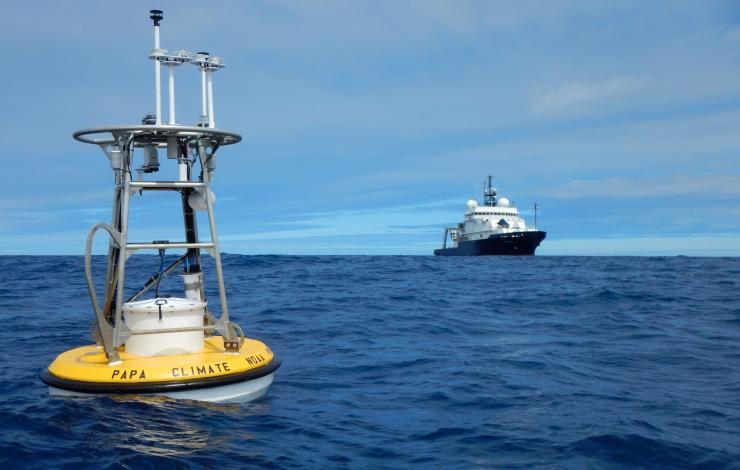
Ocean Station Papa is a long term surface mooring that monitors ocean-atmosphere interactions, carbon uptake, and ocean acidification in the Gulf of Alaska. As part of the global network of OceanSITES reference stations, measurements from the mooring are used to improve satellite products and forecast models as well our understanding of air-sea interactions, and their role within the climate system.
NOAA PMEL oceanographers and colleagues lead an effort to establish first-of-its-kind standards for calculating and reporting trends in ocean acidification observations
For the first time, an international research team compiled a set of best practices to assess and report ocean acidification trends. Standardized procedures for measuring ocean carbon chemistry are already largely established, but a common set of best practices for trend analysis are missing. These best practices will facilitate ocean acidification comparison of trends across different regions. They also allow the research community to establish enduring accurate records of change that communicate the current status of ocean acidification to the public.
Ocean acidification occurs when the ocean absorbs carbon dioxide from the atmosphere, causing a fundamental chemical change. The global rise in ocean acidity is fueled by human-emitted greenhouse gases. The global ocean has absorbed approximately 620 billion tons of carbon dioxide (~25%) from emissions released into the atmosphere by burning fossil fuels. Impacts from ocean acidification will vary by region. In order to implement adaptation and mitigation strategies, managers need an accurate and comparable understanding of how ocean acidification progresses globally, regionally and locally. This requires standardized procedures at all levels of data collection, dissemination, and analysis.
Newly published work in Frontiers in Marine Science describes these best practices developed from input from the ocean carbon science community and established best practices already adopted for atmospheric greenhouse gases. Just as NOAA’s Earth System Research Laboratories’ (ESRL) researchers played an active role in establishing standards for assessing trends in atmospheric CO2, PMEL researchers are now doing the same for ocean carbonate records.
These best practices offer a consistent analysis method people can implement on surface ocean carbon datasets to better understand ocean acidification trends and compare across regions. It will be essential to revisit, share and update these best practices as more ocean carbon measurements are available, particularly from new autonomous observing technologies.
Accompanying these best practices is free, publicly-available software for calculating trends on PMEL’s GitHub.


